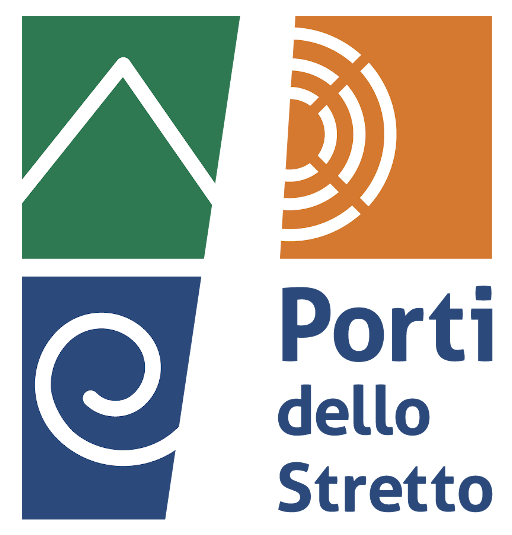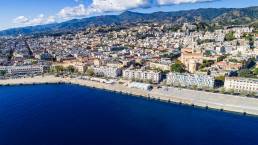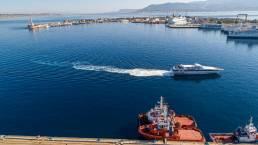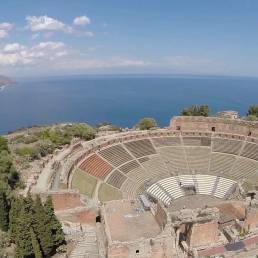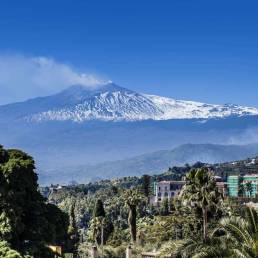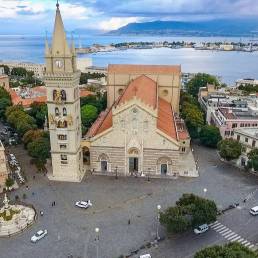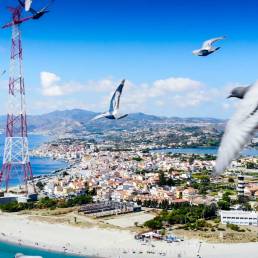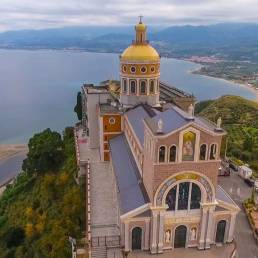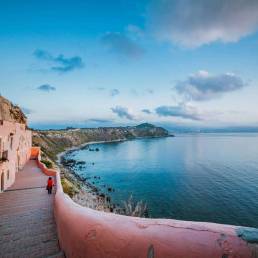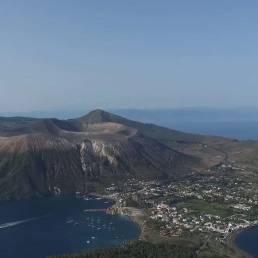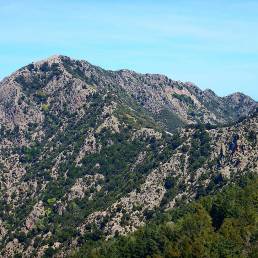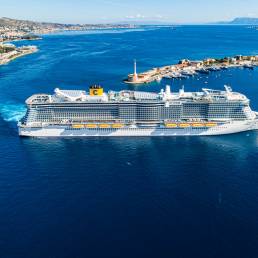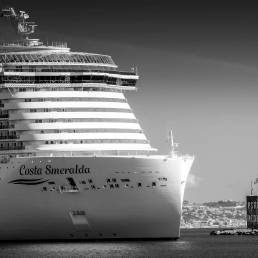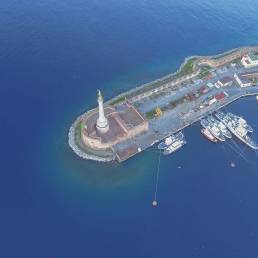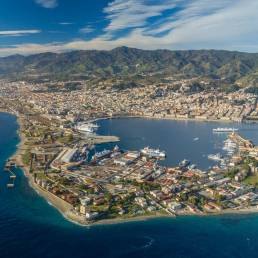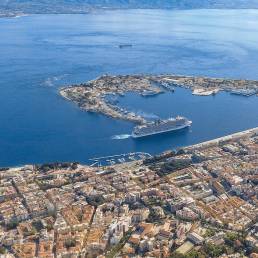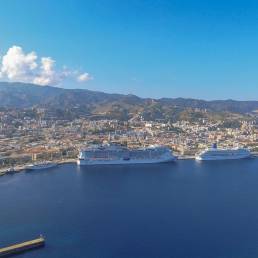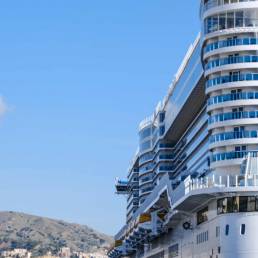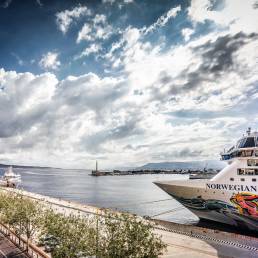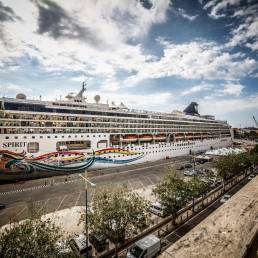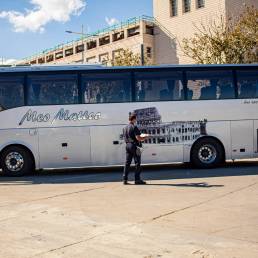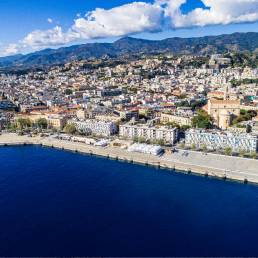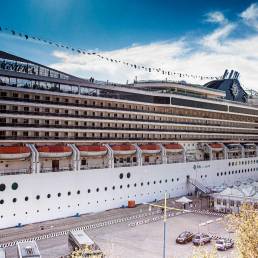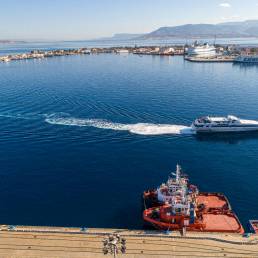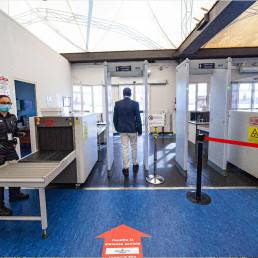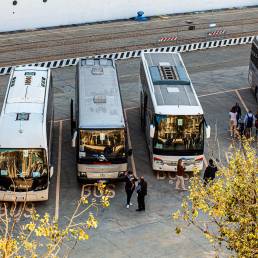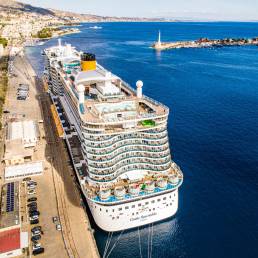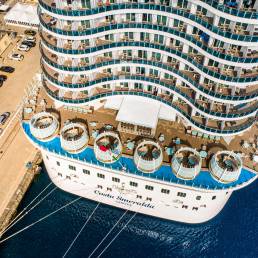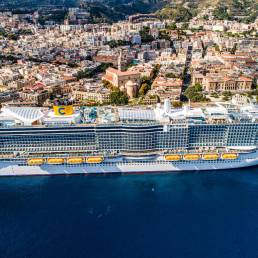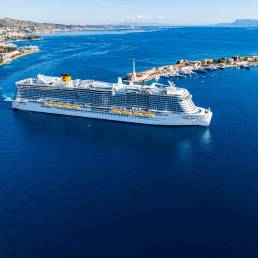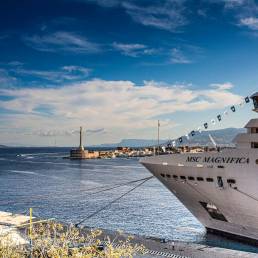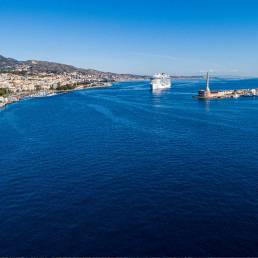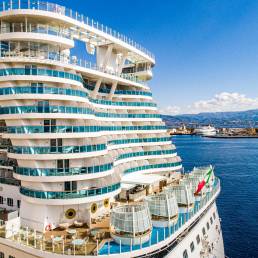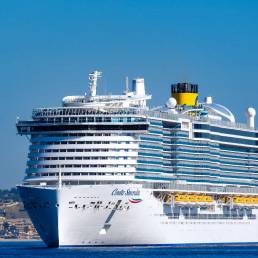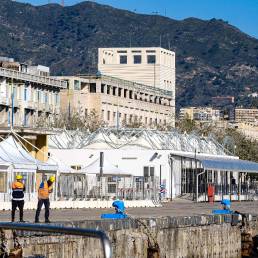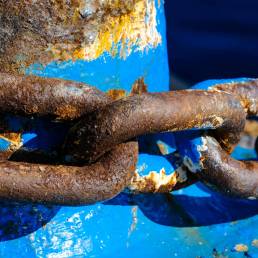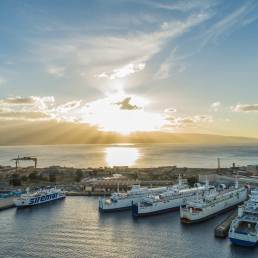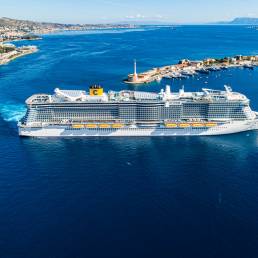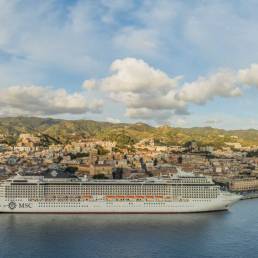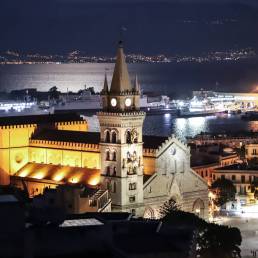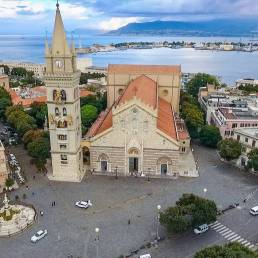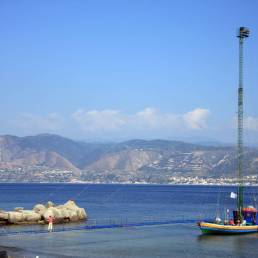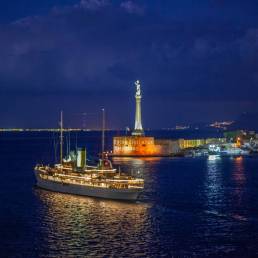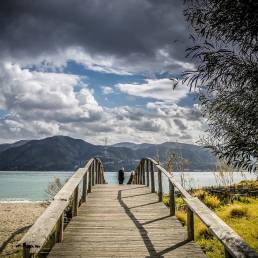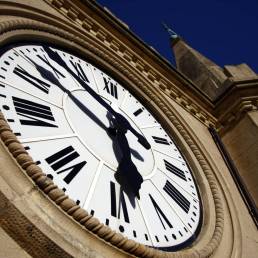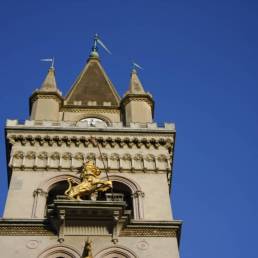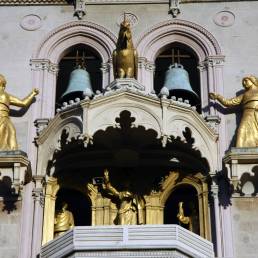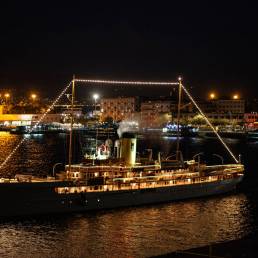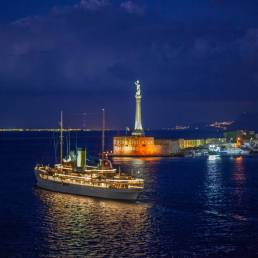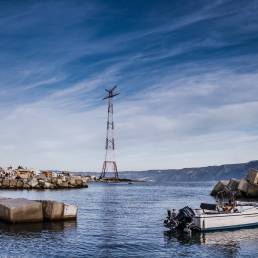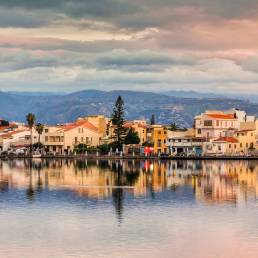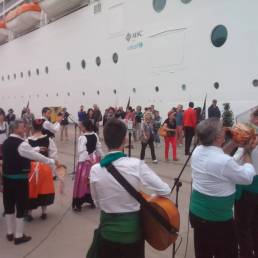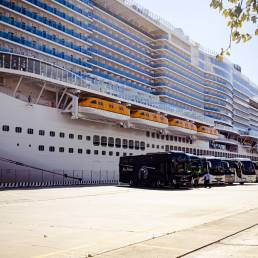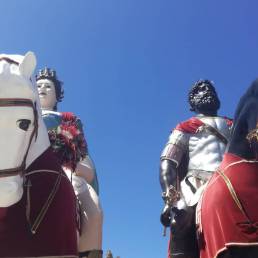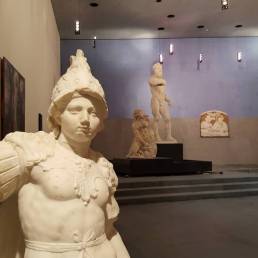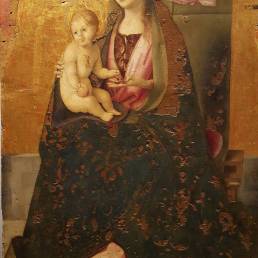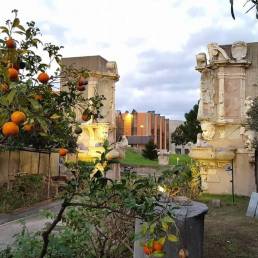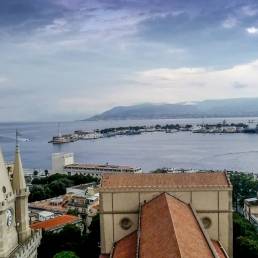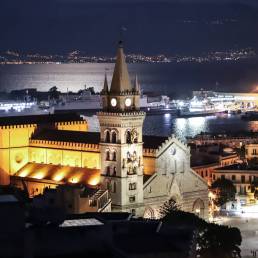Characteristics
According to the current classification, the Port of Messina belongs to the 1st class of the 2nd category of National Ports. Its water mirror reaches a surface of c.a. 75 H.A.
The port areas, on the other hand, occupy a total area of c.a. 50H.A. The port of Messina, fully integrated into the urban structure of the city, is a natural port entirely equipped with docks that offers a safe refuge from any wind. The port entrance, facing NW, is about 400m wide and extends between Forte S. Salvatore and the operational headquarters of the Port Authority of the Strait of Messina.
The traversal sector is 11° (Greco and Greco – Levante): the port is affected by the 1st and the 2nd quadrant winds. The seabed (essentially made up of sand) reaches a maximum depth of 65 meters in the NE area of the water mirror (near the buoy for compass turns).
The average depth of the entire basin (about 100 meters from the quays) is equal to 40 meters, while the depths on the quay range from 6.5 mt to 11 mt. The docks are equipped with fixed and mobile cranes, with tracks for railway connections and extend for approx. 1,770 meters.
When entering the port it is necessary to keep the right towards the green light, located near the operational headquarters of the Harbor Master’s Office, while at the exit it is necessary to keep straight towards the red light, located near the Fort S. Salvatore. The ferry traffic between Italy and Sicily is remarkable.
History and Myth: Port of Messina
The city of Messina has very ancient maritime traditions due to the port, which for centuries has influenced and improved its economic, commercial and political development. Its original greek name, Zancle, derives from the characteristic sickle shape of the harbor. In prehistoric period the port of Messina was located on a route of fundamental importance for the Mediterranean sea traffic. Messina became the main port on the island with the advent of the Romans. In these ages the city became the “Civitas foederata” of Rome, obtaining many privileges in maritime and commercial fields. The centrality and importance of Messina suffered a setback during Byzantines dominations. The Normans and Roger I in particular, brought Messina and its port back into vogue.
In this period the city became the seat of the Consulate of the Sea, a court made up of consuls freely elected by merchants and navigiorum primates which issued norms and ordinances for the regulation of relations between traders, exempted the people of Messina from taxes, customs and other payments and established other commercial advantages that enhanced even more the traffics. The Port of Messina grew up to one of the most important ports in the Mediterranean, both from a military and commercial point of view, thanks to the Consulate of the Sea, the construction of a new arsenal and the Darsena, the establishment of an Admiralty with jurisdiction over the port, the coast and shipbuilding, together with many other privileges recognized to the city. In the Middle Ages, when almost all Italian cities were suffocated by retrograde feudal institutions, Messina, as the Maritime Republics, was subjected to a very open regime.
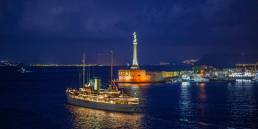
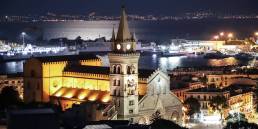
In 1197 the concession by Henry VI of the Free Port, which allowed the people of Messina to freely import and export all the goods handled, without paying any tax or duty. Economic activity and trade flourished for centuries, but the privileges enjoyed by Messina exacerbated relations with the other competing cities of the island and especially with Palermo, whose ruling class managed to convince the Spanish rulers to reduce the advantages and benefits enjoyed by the city and the port of Messina. The Messina Senate then drove out the Spanish Stratigò and allied itself in 1674 with the French. This alliance lasted very little and the return of the Spaniards coincided with the abolition of all the privileges and of the Free Port itself. Under the Bourbons, the city tried to recover the traffic and exchanges that had made it so flourishing in the past, trying to attract foreign merchants and entrepreneurs again. The Free Port was re-established in 1784 and after various events extended to the whole city in 1848, until it was definitively abolished in 1879. At the end of the 19th century, buildings instrumental to maritime activity such as the covered market, the general warehouses and the ferry station were built in the city. The catastrophic earthquake of 1908 and the enormous damage that the whole city suffered led to a contraction in traffic and port activities. The reconstruction of the port structure in the thirties follows the nineteenth-century arrangement. The twentieth century saw the development in the port basin of a significant shipbuilding activity and the decision to make in Messina one of naval base of the Italian Navy and the related Arsenal. With the establishment of the Mechanical Vehicle Company and the Port Warehouses, absorbed in January 1995 by Port Authority of Messina, commercial operations have received new impetus and the cruise sector has enjoyed a truly significant increase in traffic so much so that the Port of Messina has become one of the first in Sicily in this sector.
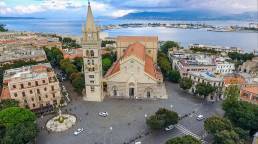
Mythology and Legends
Messina is par excellence the “City of the Strait” which has always been the subject of mythological narratives and legends. The characteristic geological formation of the port of Messina is traced back to the myth of Saturn (Cronus): with a scythe he evaded his father Uranus, who got angry and threw the tool in the direction of the Strait originating that tongue of land with a particular shape of sickle. The mythical giant Orion, son of the god Neptune, on behalf of King Zanclo, adapted the sickle to a port basin. The separation of Sicily from Calabria, with the consequent formation of the Strait of Messina, is attributed to a powerful blow of the trident of the God Neptune (Poseidon). The Homeric myth of Scylla and Charybdis, the two monsters terror of sailors for millennia, justifies the dangerous eddies (including the one called “u Garofalu“, just outside the port) that affect this stretch of sea.
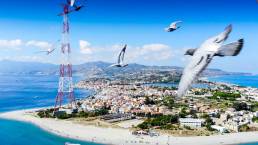
The myth of Fata Morgana identified by a rare optical refraction phenomenon. The legend of Colapesce, a brave sailor of the Strait of Messina, who saw under the sea the Peloro column, on which lies the northen cusp of Sicily, almost broken. Then, fearing that his Messina could collapse at any moment, he wanted to replace it and ran to support it for eternity.
With D.L. 23/10/2018 n. 119, converted by the Law 17/12/2018 n. 136, the Port Authority of Messina has been replaced by the Port System Authority of the Strait of Messina with jurisdiction over the ports of Messina, Milazzo, Tremestieri, Reggio Calabria and Villa San Giovanni
Cruises
The Ports of Messina and Reggio Calabria, which are under surveillance by the Port Authority of the Strait of Messina, are mainly characterised by intense cruise shipping thanks to the tourist attractions of the area and their enviable locations.
STATISTICS
Statistics of the Port of Messina
Statistics regarding the tons of goods, the number of passengers and the number of cruise passengers transited at the Port of Messina.
GOODS
7,131,391t
Year 2021
PASSENGERS
7,769,231
Year 2021
CRUISES
156,322
Year 2021
Destination - Messina Area
Find out more about tourism in the Strait of Messina
Visit the websites of the cities and organizations. Find out more about the places of intrerst: nature, relax, culture, food and wine and much more that the Strait is able to offer.
